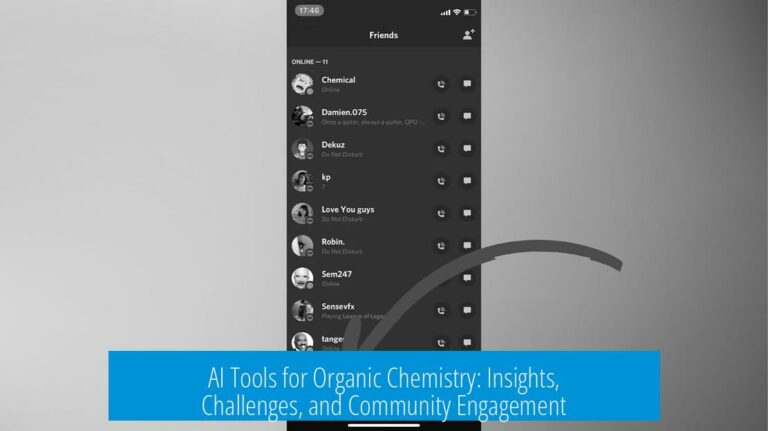Is Mirror Life a Near-Term or Middle-Term Possibility? And Why Pursue It?

Mirror life, composed of molecules with opposite chirality to natural life, is not a near-term reality but might become possible within 25 to 50 years due to advances in synthetic biology and chemical synthesis. The pursuit of mirror life aims to explore fundamental biology and develop novel applications, despite significant challenges and potential risks.
Feasibility and Timeline

Current technology allows the chemical synthesis of proteins, nucleic acids, and sugars in their mirror forms—D-amino acids and L-sugars instead of natural L-amino acids and D-sugars. Researchers have synthesized entire bacteria and work on mirror RNA polymerases is ongoing.
However, building a fully synthetic mirror organism is complex and requires constructing specialized equipment to synthesize and assemble large biomolecules at scale. Experts estimate it could take 25 to 50 years to achieve this consistently.

Major Challenges
- Mirror life would need mirror-form nutrients, difficult to locate or produce naturally.
- Competition with existing microbes would be harsh; mirror organisms may perish quickly.
- Cellular structures like lysosomes rely on lipid chirality. Mirror organisms’ lysosomes could destabilize due to incompatible lipid arrangements.
- The assembly of all necessary mirror biomolecules and their integration into living systems is a formidable chemical and biological hurdle.
Potential Uses and Motivations

Mirror life offers unique scientific benefits. It could clarify how early life evolved and what molecular components are essential for life’s processes. Mirror biomolecules, such as D-peptides, exhibit improved pharmacokinetic and pharmacodynamic properties, which can aid drug design.
Moreover, studying mirror life may deepen understanding of molecular chirality’s role in biology.

Risks and Ethical Considerations
Mirror organisms might interact unpredictably with natural ecosystems. While they may not effectively infect humans due to enzyme incompatibility, their potential pathogenicity raises concerns.

Some experts warn of catastrophic risks if mirror life escapes containment. Eradication methods could be extreme, emphasizing the importance of strict safety protocols and ethical debates around research and development.
Cultural and Scientific Parallels

Science fiction often imagines mirror life forms. For example, opposite chirality life has been proposed in fictional universes like Mass Effect, where alien species possess reversed biomolecules.
Such references reflect curiosity about alternative biochemistries and inspire speculative and experimental research.
Key Takeaways
- Mirror life remains decades away due to technical and biological complexity.
- It requires synthesis of full mirror biomolecules and specialized assembly.
- Scientific motivations include evolutionary insights and novel therapeutics.
- Safety and ethical risks demand cautious, controlled research.
- Mirror life concepts capture both scientific inquiry and cultural imagination.
Seriously, is ‘mirror life’ a near-term or even middle-term possibility? And why do it?
Mirror life is not a tomorrow thing, but it could definitely be a thing in the next 25 to 50 years. With steady progress in synthetic biology, especially in mirror RNA polymerases and chemically synthesized proteins, scientists inch closer to creating fully mirror-image cells. The technology to build synthetic bacteria exists, and making inverted building blocks like polypeptides and nucleic acids is within reach. The real hurdle? Scaling it all up physically and assembling these mirror components precisely.
Curious about mirror life? Imagine a world where living things are made of opposite-handed molecules—like left-handed vs. right-handed gloves but in cellular machinery. This “mirror chirality” concept fascinates chemists and evolutionary biologists alike.
Where we stand today: Is it right around the corner?
Despite exciting advances, mirror life remains a long game. Experts estimate a 25-50 year timeline before we might see a fully developed mirror cell. Why so long? It’s not for lack of clever minds. Ting Zhu, a leading figure in this field, is close to achieving this feat through brute-force chemical synthesis. Critics call him either wildly optimistic or a visionary for the ages. Regardless, building synthetic life—especially mirror life—is extremely resource-intensive and technically complex.
Currently, there’s no turning back from the chemistry we’ve mastered. We can synthesize entire bacteria and make mirror versions of proteins and sugars. The missing piece is the massive, intricate hardware to put all parts together competently.
The tough nuts to crack: Challenges mirror life faces
Crafting all mirror components is only the beginning. Putting them together into a functioning organism is a monumental challenge. Mirror life would struggle gathering the right nutrients because the environment offers only standard right-handed molecules. For these organisms, everything conventional is “backwards.”
Nature also throws curveballs. Lysosomes, the cell’s trash bags, rely on lipid chirality. They digest cellular waste without self-harm because they differ in chirality from other lipids. Will mirror lysosomes work? That’s an open question scientists are cautious about.
Even if mirror organisms were created, survival outside lab conditions looks grim. They’d likely perish quickly due to food competition with normal microbes. In essence, natural biology provides a kind of quarantine for these curious cells.
Why bother? The scientific and practical perks of mirror life
So why put all this effort into something that might not thrive naturally? The reasons are surprisingly compelling. Mirror life could shed light on fundamental evolutionary questions, revealing which molecular features are vital for self-replication. It’s like trying the recipe backwards to better understand how life’s original ingredients worked together.
Pharmacology also shows promise. Mirror peptides (d-peptides) boast superior pharmacokinetic and pharmacodynamic properties compared to their regular counterparts. This means they can last longer, work better, and resist breakdown. Developing mirror life forms could open doors to new classes of drugs and therapies.
Risky business: The ethical and safety concerns
With great power comes great responsibility—and potentially terrible risk. Mirror life stirs debate about catastrophic consequences. If an engineered mirror organism escapes the lab, containment might require extraordinary measures. Some say we’d need to “nuke it from orbit” to ensure safety, underscoring the severity.
But is this fear justified? Our immune systems can still detect mirror pathogens, and they aren’t invincible either. Toxicity goes both ways; we’d be harmful to them just as they’d be to us. Additionally, mirror organisms’ difficulty surviving naturally adds a layer of built-in protection.
Still, ethical concerns remain. Creating entirely new life forms challenges our understanding of responsibility and control. Debate continues about how far we should push synthetic biology, especially when “the point of no return” looms.
Mirror life in popular imagination
For the sci-fi fans, mirror life isn’t just a lab fantasy. It sparks visions of alien life with opposite chirality—like the Quarians and Turians from Mass Effect, speculated to be mirror-life forms. Could mirror life explain possible avian-like people or other exotic creatures? The thought tickles curiosity and imagination alike.
But sci-fi aside, the real journey to mirror life is a mix of chemical wizardry, biological puzzles, and ethical questions. It blends cutting-edge science with the timeless quest to understand life at its core.
So, seriously, should we pursue mirror life?
It’s a tough question with no easy answer. We’re not on the doorstep yet, but if we build the technology and knowledge, we could unlock profound insights and medical advances. At the same time, the risks demand careful oversight, cautious ethics, and robust safety nets.
For now, mirror life remains an intriguing possibility on the horizon, a middle-term frontier in synthetic biology. Scientists watch, work, and wonder about this strange life that’s a reflection—both literally and figuratively—of ourselves.
In sum: Mirror life is at least decades away and stuffed with challenges. Yet it captivates scientists with its potential to illuminate evolution, inspire new drugs, and perhaps rewrite what it means to be alive. Why do it? Because in the theater of science, sometimes the best show is one that mirrors our curiosity back at us.
Is mirror life likely within the next few decades?
Current estimates place mirror life at 25–50 years away. Progress in synthesizing mirror RNA polymerases and proteins exists, but scaling the technology remains a major hurdle.
What challenges would mirror life face in surviving natural environments?
Mirror organisms struggle to find food because natural molecules have opposite chirality. They might die quickly due to competition and difficulty obtaining necessary mirror enantiomers.
Why pursue creating mirror life despite the difficulties?
Mirror life could reveal key insights into early evolution and self-replication. D-peptides from mirror organisms may also serve as improved drug candidates with better pharmacokinetics.
Are there risks if mirror life escapes into the environment?
Mirror life could pose serious risks and might be uncontrollable if released. While human immune defenses may work, managing such synthetic organisms would be complex and potentially dangerous.
Does mirror life appear in popular culture or science fiction?
Yes, beings with opposite chirality, like Quarians and Turians in Mass Effect, imagine mirror life forms. This suggests intriguing possibilities for alternative life chemistries.





Leave a Comment